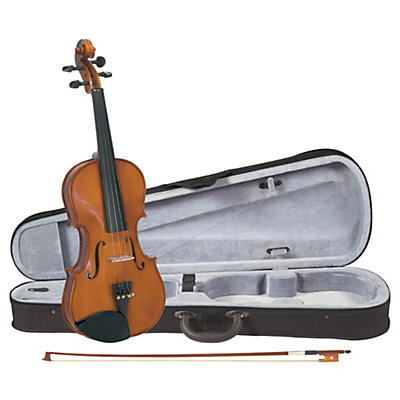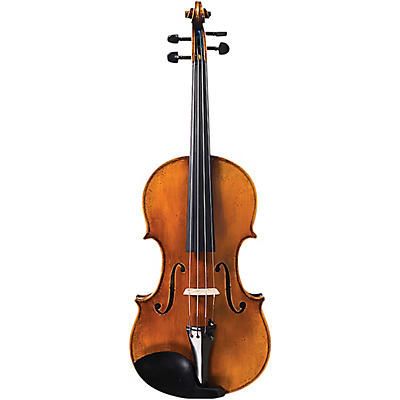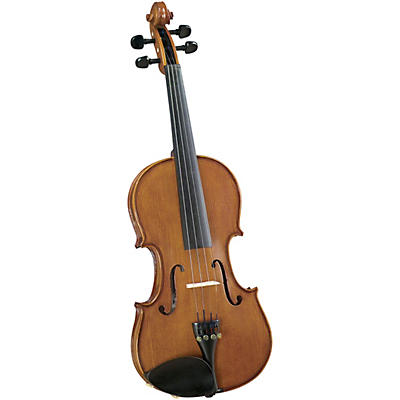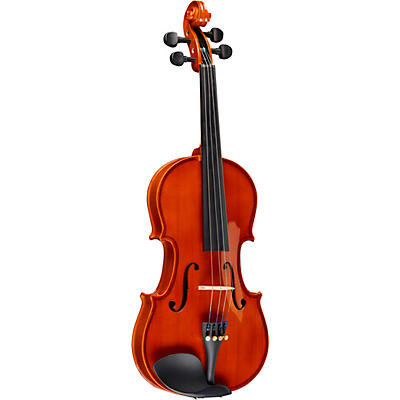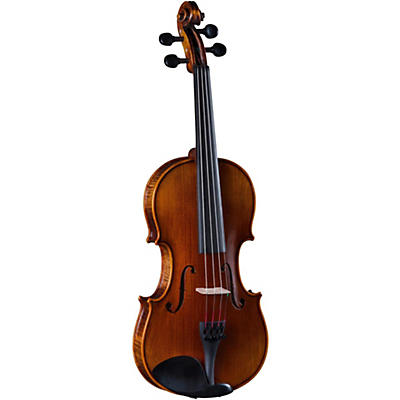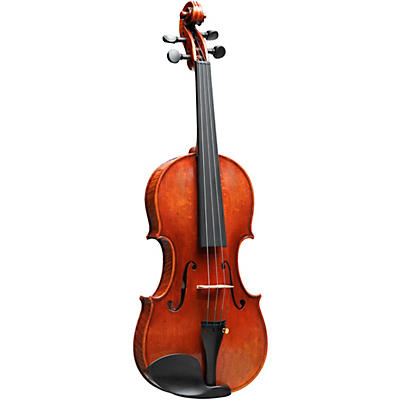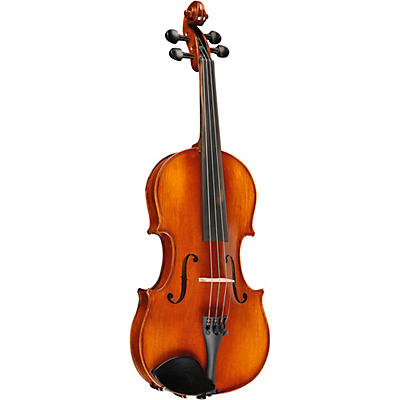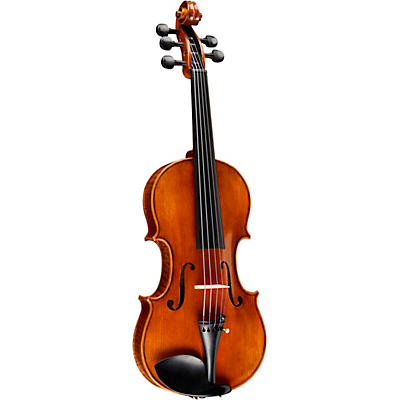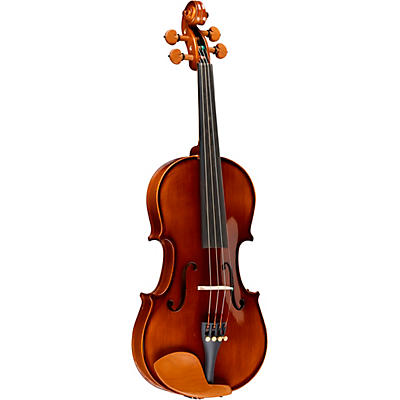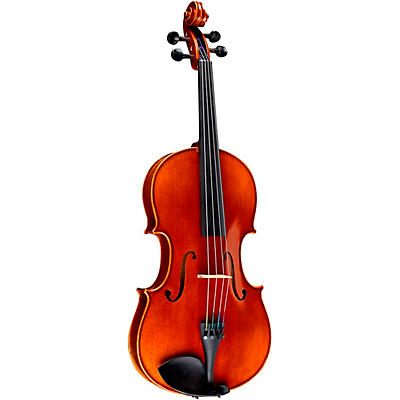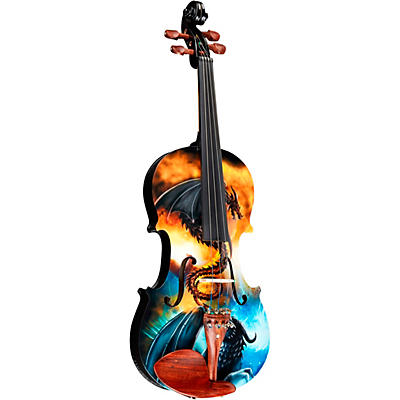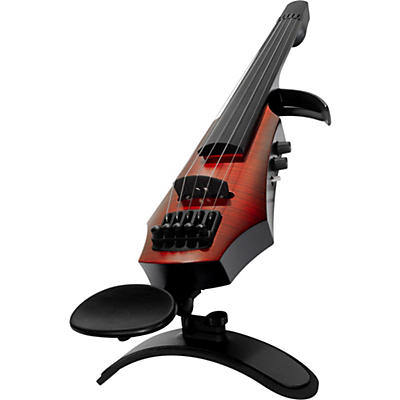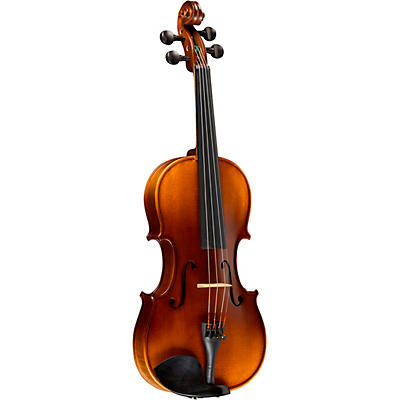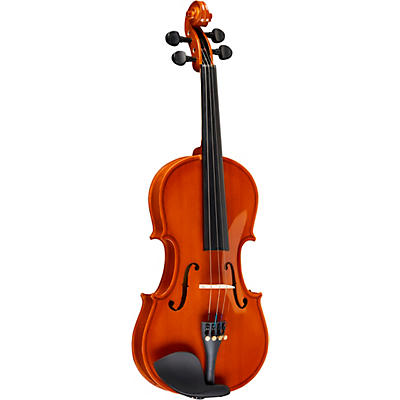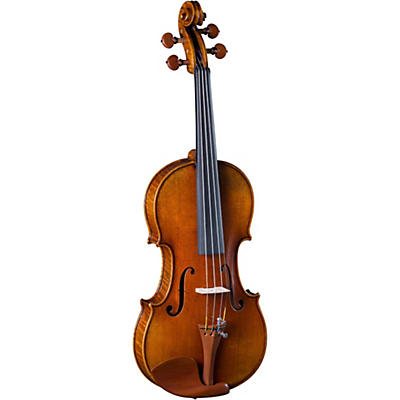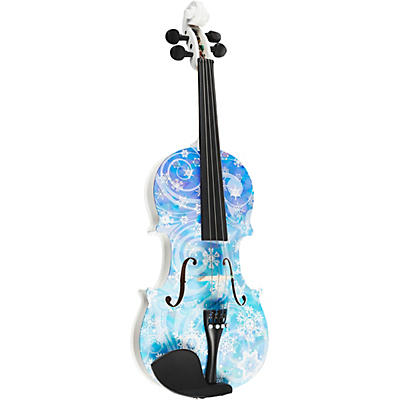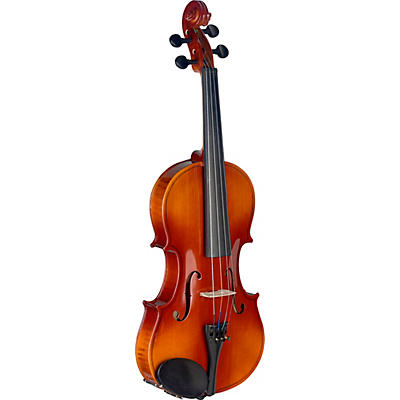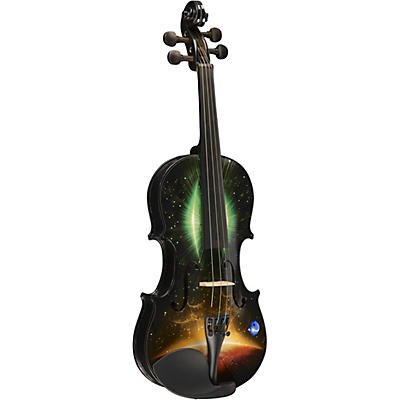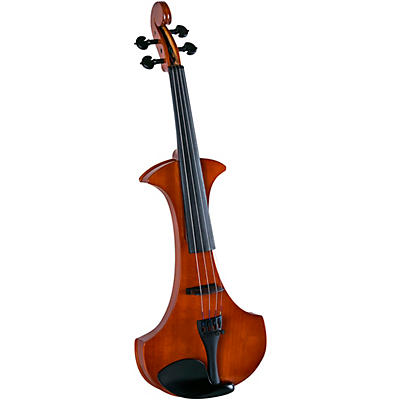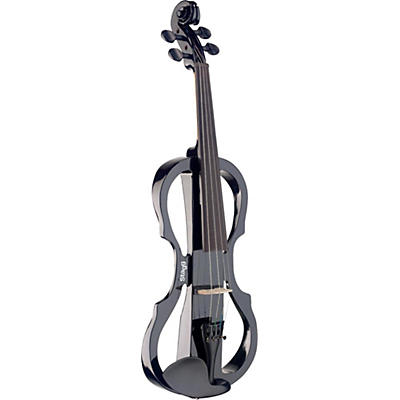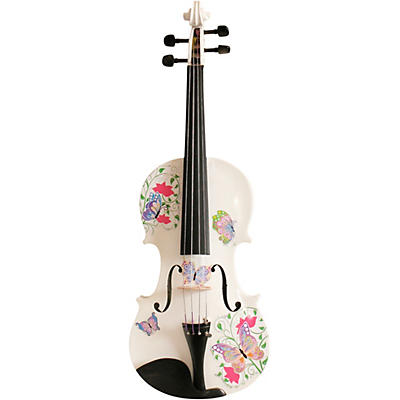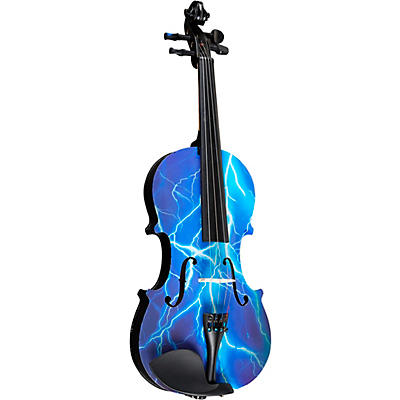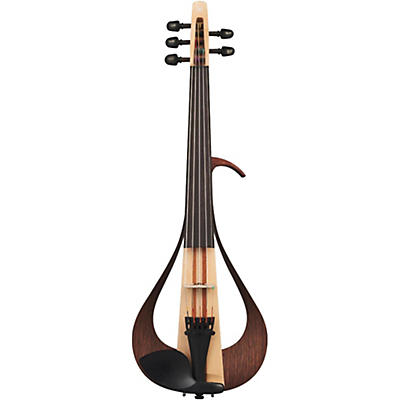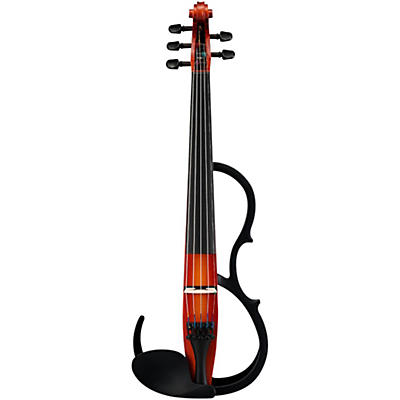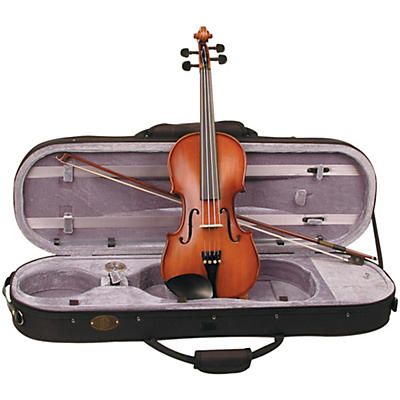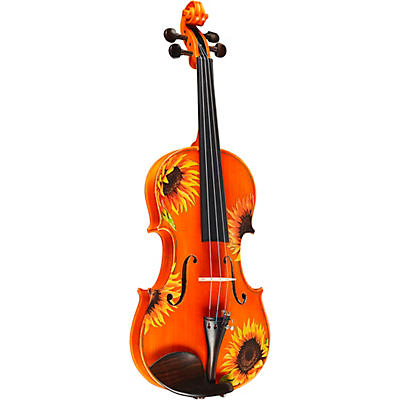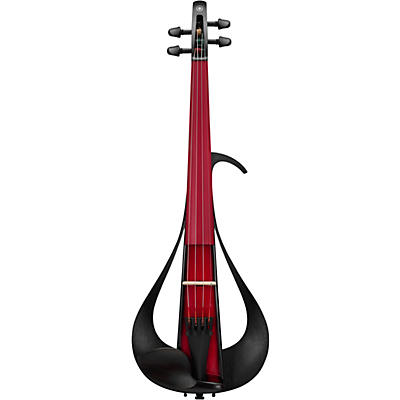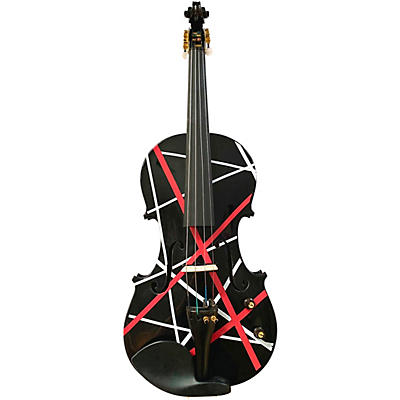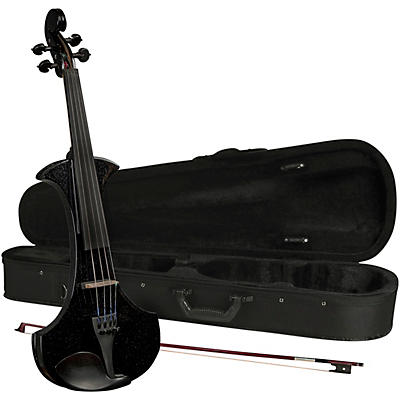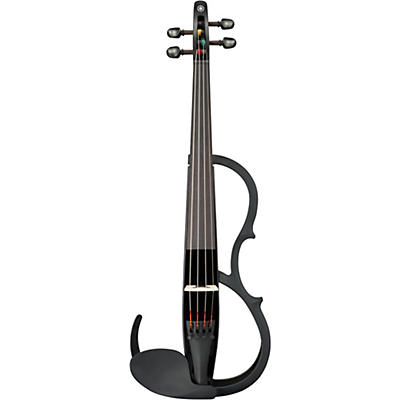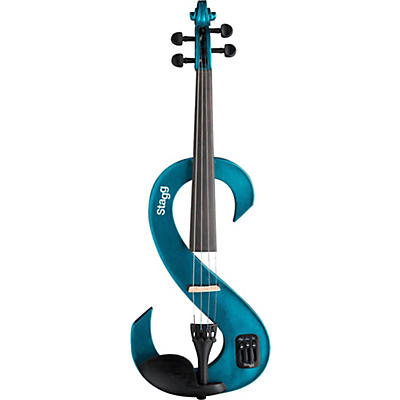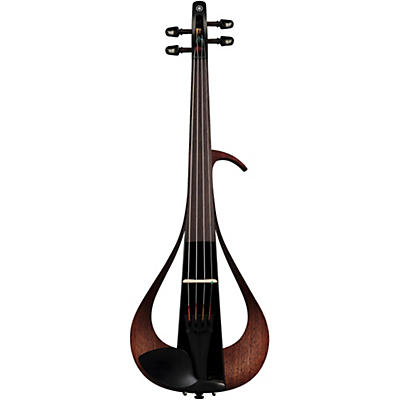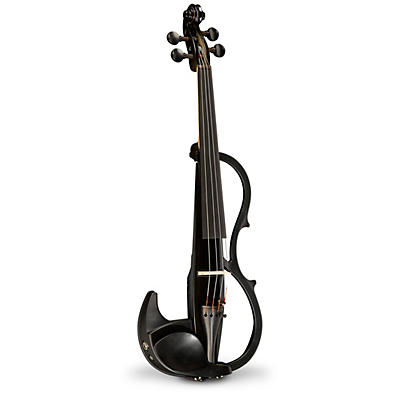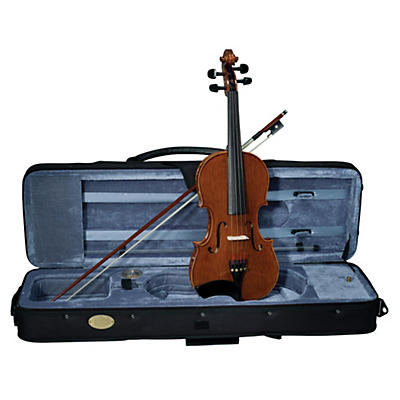About Violins
When Italian luthier Andrea Amati created the modern violin in the early 1500's, it didn't take long before the sheer elegance and beauty of the instrument would take the world by storm. Today, the violin still remains one of the most popular and diverse musical instruments, and can be found in a wide variety of different styles and sizes, depending on one's skill level or personal preference.
Before purchasing a violin there are definitely a few things to consider. For example, do you prefer a brighter sound on the higher strings, or a warm upper register? It's also important to keep in mind that a violin's craftsmanship and playability varies depending on the luthier, as well as the woods and materials used. Of course, you can have peace of mind knowing that there are more than enough renowned and respected brands within this section that are known for their meticulously crafted violin models, and careful attention to stability, beauty, and tone.
Musician's Friend offers an impressive selection of the best violins for beginners, students and professionals. Although mastering the violin takes a lot of patience and discipline, it can also be a thrilling and rewarding musical endeavor. And whether you're an enthusiastic novice player, or an experienced professional who hits the biggest stages, the perfect violin for you can easily be found right here.
The violin is the king of the strings. Cello has its charm, bass its presence and viola its sense of harmony, but the violin is the lead instrument in the quartet and in the orchestra. It is also the primary vehicle for much of music history’s greatest compositions. Early study of the violin is common for many musicians. Its scale is adaptable to small hands, and it offers an open door to young people’s musical imaginations. The violin teaches lessons about pitch, rhythm, harmony and expression.
History of the Violin
There are many ways of making music, and all of them involve vibration and resonance. Primitive island dwellers pursed their lips into conch shells, an idea that evolved into trumpets, trombones and tubas. Ancient Greeks developed double-reed instruments that developed into modern oboes and bassoons. The first bowed string instruments were developed in central Asia and came to prominence in India, notably Sri Lanka, with an instrument called the ravanastron.
The violin can be said to have roots in the ravanastron, but a more direct predecessor is found in the lira da braccio. The lira da braccio’s prominence bloomed around the middle of the 15th century and faded in the 17th century. It was replaced by the modern violin, whose essential design remains unchanged more than 400 years later.
Andrea Amati (1510 - 1577) is often credited as the first great violin-maker. His workshop, located in Cremona, Italy, is where the contours of the modern violin, cello, and viola were developed. Amati innovations include popularizing the fourth string as a standard (many contemporary models only had three), the convex body, and the tradition of ornate scroll design.
The violin name that everyone knows is Stradivarius. Antonio Stradivari was apprentice to Nicolo Amati, Andrea's grandson. Between the two, Amati and Stradivari perfected the design of the modern violin. Today, particularly well-made and well-preserved Stradivarius violins fetch millions of dollars at auction.
Parts of a Violin
The principle of a violin is the idea of a taut string suspended over a resonating chamber that is energized by a bow being drawn across it. Every component of a violin contributes to its sound or its functionality.
Starting with the resonating chamber or body of the violin, the widest part is called the lower bout. The body’s thinnest part, where it is cut away to accommodate bow strokes, is called the center bout or waist. The upper bout is where the violin’s neck is attached to the body. The other prominent feature of the body is the f-holes, located just inside the center bout. F-holes are the aperture through which much of the sound of a violin is produced. Amati, Stradavari and other makers settled on an F-hole shape and position that has endured for centuries.
The violin’s neck system consists of a scroll, peg box, pegs, nut, neck and fingerboard. The scroll is located at the top of the neck. It can be simple or ornate, and is sometimes used to express an extra level of craftsmanship on the part of the maker. The pegs tighten and loosen the strings to their correct pitch, and the nut provides one end of the string’s suspension mechanism. The neck attaches to the violin’s body, and a fingerboard is attached to the upper side of the neck. A tailpiece for anchoring the strings is affixed to the bottom of the violin. The bridge is equipped with fine-tuners for small adjustments during performance.
Terminology for the bow includes stick, tip, hair, ferrule, frog and screw. The handle section consists of the ferrule, frog and screw, and the bow section consists of the tip, hair and stick. The screw adjusts the tension of the bow’s hair, and the frog supplies a space to grip the bow. The stick is the bulk of the bow’s length, and of course, the hair (usually horsehair or a synthetic) is drawn across the violin’s string.
Finding the Best Violin for You
Most music educators and parents shopping for a student violin don’t do it at Sotheby’s. As a committed supplier of band and orchestra instruments to beginning students, advancing students, enthusiastic hobbyists and professionals, we maintain a wide selection of violin brands, models and accessories.
Recommended violin brands include Bellafina, Stenton, Cremona, Ren Wei Shi and Knilling. Most of these brands are available in 3/4, 1/2 and 1/4 sizes to suit the youngest beginners. They are also available as an outfit, which includes a case, bow, rosin and care products. Another great brand we carry is Rozanna’s, whose instrument designs are complemented by elaborate graphics on the violin’s top.
All of our violins and violin packages come set up to stringent playing specifications and are ready to go right out of the box. More experienced players can find their best deal here on a Yamaha or a Maple leaf violin, and can always get great pricing on violin strings, rosin, cases, shoulder rests, chin rests and other accessories.







































































































































